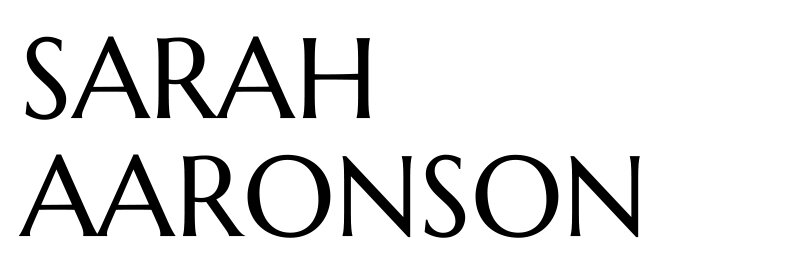HAIL MARY
Painting referenced in collage Aha oe feii? (What? Are You Jealous?) • 1892 • Paul Gauguin • The Pushkin State Museum of Fine Arts, Moscow | Photograph referenced in collage A Stream in the Mataiea District on the South Coast of Tahiti • 1904 - 1921 • Lucien Gauthier | Collage by Sarah Aaronson
How the models sauntering to the beat of primitive tribalistic rhythms on Dries Van Noten’s Spring 2008 catwalk appeared to be emerging out of one of Paul Gauguin’s canvas masterpieces, particularly that of his 1891 pièce de résistance, ‘Ia Orana Maria,’ otherwise known simply as Hail Mary… According to The Met, who lists the painting in their permanent collection, “Before embarking on a series of pictures inspired by Polynesian religious beliefs, Gauguin devoted this, his first major Tahitian canvas, to a Christian theme, describing it in a letter of March 1892: "An angel with yellow wings reveals Mary and Jesus, both Tahitians, to two Tahitian women, nudes dressed in pareus, a sort of cotton cloth printed with flowers that can be draped from the waist. Very somber, mountainous background and flowering trees . . . a dark violet path and an emerald green foreground, with bananas on the left…” Gauguin was able to capture the vivid landscape and purity of the Tahitian people on canvas and within his pictorial journals, much like Lucien Gauthier was able to do in his silver-tone photographs taken shortly after many of the paintings were created.
Pair of watercolors referenced in collage from Noa Noa • 1894 - 1901 • Paul Gauguin • Musée d'Orsay, Paris | Collage by Sarah Aaronson
Dries Van Noten’s use of color, as well as the bold prints of the textiles were reminiscent of pareus traditionally worn around the kaleidoscopic landscapes of Tahiti… Van Noten, perhaps unintentionally, evoked the essence of Gauguin’s dream-like paintings through his abstractly floral and leafy graphics, painterly hues, and overall romanticism on his runway. “…After the first girl walked out in a flowered halter and a pair of contrasting pants, the runway gradually came alive with color, pattern, and easy shapes… This was Van Noten back on home ground, taking summer's license to run wild with florals while also capturing everything his devotees adore about the arty/ethnic cast of his clothes...” wrote Sarah Mower for Vogue. Just as Gauguins painting was enriched with theological undertones, Dries Van Noten’s 2008 presentation was something of a religious experience in its own sartorial rite… • All runway images courtesy of Livingly
Ia Orana Maria (Hail Mary) • 1891 • Paul Gauguin • The Metropolitan Museum of Art, New York CIty
Photograph referenced in collage Aote in the Studio • 1904 - 1921 • Lucien Gauthier | Collage by Sarah Aaronson
Painting referenced in collage Pastorales Tahitiennes • 1892 • Paul Gauguin • The State Hermitage Museum, Moscow
Painting referenced in collage Tahitian Women on the Beach • 1891 • Paul Gauguin • Musée d'Orsay, Paris | Photograph referenced in collage Young Beauty in a Pareo with Her Back Turned to the Camera • 1904 - 1921 • Lucien Gauthier | Collage by Sarah Aaronson
Mata Mua (In Olden Times) • 1892 • Paul Gauguin • Carmen Thyssen-Bornemisza Collection, Madrid
Parahi Te Marae (The Sacred Mountain) • 1892 • Paul Gauguin • Philadelphia Museum of Art, Philadelphia
Raquel Zimmerman, Coco Rocha & Caroline Trentini modeling Dries Van Noten • March 2008 • US Vogue • Craig Dean
Painting referenced in collage Te Tamari No Atua (Nativity) • 1896 • Paul Gauguin • Neue Pinakothek, Munich | Photograph referenced in collage Tiare, with Taro Plants at Her Feet • 1904 - 1921 • Lucien Gauthier | Collage by Sarah Aaronson
Te Tamari No Atua (Nativity) • 1896 • Paul Gauguin • Neue Pinakothek, Munich
Nevermore • 1897 • Paul Gauguin • The Courtauld Gallery, London
Le Sourire Masthead • Bound in 1901 • Paul Gauguin • Houghton Library, Harvard University, Cambridge
Floral Printed Blouse • Spring / Summer 2008 Collection • Dries Van Noten
Eu Haere Ia Oe (Woman Holding a Fruit) • 1893 • Paul Gauguin • The State Hermitage Museum, Moscow
Matamoe (Death or Landscape with Peacocks) • 1892 • Paul Gauguin • The Pushkin State Museum of Fine Arts, Moscow
Painting referenced in collage Fatata Te Miti (By the Sea) • 1892 • Paul Gauguin • National Gallery of Art, Washington D.C. | Collage by Sarah Aaronson
Tamo Posing Nude in a Tree • 1904 - 1921 • Lucien Gauthier
Painting referenced in collage Arearea No Varua Ino (Reclining Tahitian Women or The Amusement of the Evil Spirit) • 1894 • Paul Gauguin • Ny Carlsberg Glyptotek, Copenhagen
Floral Printed Blouse • Spring / Summer 2008 Collection • Dries Van Noten
Coco Rocha & Caroline Trentini modeling Dries Van Noten • March 2008 • US Vogue • Craig Dean
Manao Tupapau (Watched by the Spirit of the Dead) • 1892 • Paul Gauguin • Albright-Knox Art Gallery, Buffalo






























